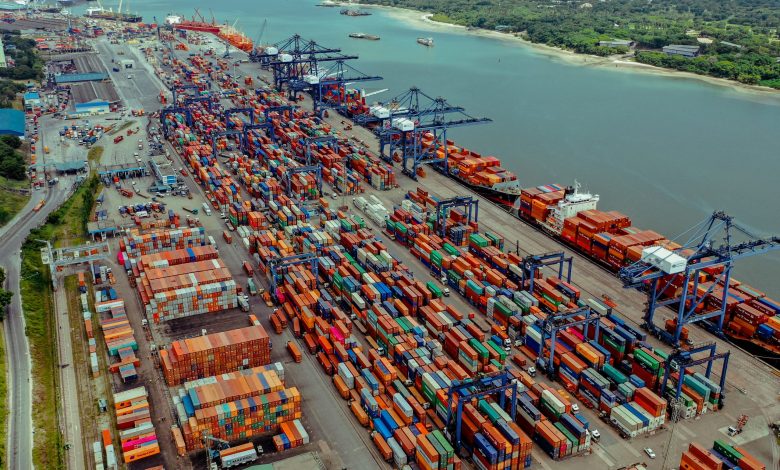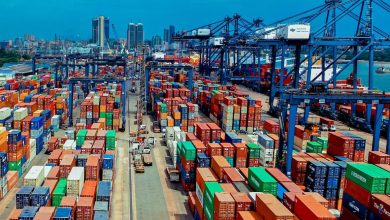How PPP enhances Dar Port efficiency

DAR ES SALAAM: THE government’s effective engagement with the private sector has significantly enhanced the efficiency of the Dar es Salaam Port increasing customs revenue collection to 8.26tri/- between July 2024 to February 2025 from 7.08tri/- in the corresponding period 2023/2024 Financial Year.
The strategic public-private partnership (PPP) involving the DP World and the Tanzania East Africa Gateway Terminal Limited (TEAGTL) also reduced waiting time for ships at anchorage from an average of 46 days to seven days for general cargo and bulk cargo vessels as well as three days from 10 days for containerised cargo.
TEAGL which operates the terminal two has successfully implemented the Fixed Berthing Windows (FBW) concept at the Dar es Salaam Port aiming to reduce waiting time for vessels thereby accelerating cargo movement. FBW are pre-assigned time slots for vessels to arrive and berth at a port, replacing the traditional first-come, firstserved approach.
It provides the carrier with the assurance that their vessel will not have to wait in a queue, provided they arrive at the stipulated time. This initiative has been uplifting the Eastern Africa gateway’s performance to contribute more to the citizens’ livelihoods and the country’s economic growth at large.
Commenting recently, TEAGL’s Director, Mr Shazad Athar said FBW is not just a terminal improvement but a rather a shift in the way trade is facilitated at the national level.
“Our efforts are aimed at the Tanzania manufacturing and perishable sector to build a competitive advantage through supply chain visibility for exporter and exporter,” he said.
TEAGL’s CEO, Mr Jeyalaj Thamburaj described the success of the FBW concept as remarkable testimony to the dedication and efforts of their team.
This shift is widely regarded as a global best practice in port management. He said by providing fixed and predictable berthing schedules the FBW has been reducing vessel waiting time and improve overall performance of the port.
Mr Thamburaj also underlined the importance of the TEAGTL training programme intending to level up operators’ effectiveness.
Tabling the budget estimate for the 2025/2026 Financial Year in the parliament recently, Minister for Transport, Professor Makame Mbarawa highlighted the impressive progress of the port as result of the PPP which contributed into installation of sophisticated equipment.
“The investors have facilitated availability of modern equipment and machinery as well as installation of Information Communication Technology (ICT) systems which continue to enhance efficiency in the port operations,” Prof Mbarawa said.
Adding “such remarkable improvements have made the Dar es Salaam Port to be a regional and international gateway,” Furthermore, Prof Mbarawa said the intensive on-going modernisation of the port has cut the Dar es Salaam Port operation cost to 685.16bn/- from 975bn/-, the amount incurred prior to involvement of the private sector equivalent to the decrease of 30 per cent.
He said the country has continued to experience a rise of non-tax revenue to various public entities which provide serves at the Dar es Salaam Port.
ALSO READ: Tanzania starts re-evaluating bilateral investment treaties
More notably, he said engagement of the private sector at the port is poised to contribute early realisation of the 20 year master plan of the Tanzania Ports Authority (TPA) which targets at ensuring all ports across the country handle 30 million tonnes by 2029/ 2030 Financial Year.
Prof Mbarawa said as of March 2025 already all ports have served 27.55 million tonnes with the expectation being by the end of 2024/2025 to handle 30 million tonnes.
Overall, according to the Bank of Tanzania (BoT) in the period covering July 2024 to March 2025, the transport sector’s contribution to foreign currencies stood at 2.48 billion US dollars (about 6.6tri/-) compared to 2.29 billion US dollars (6.1tri/-) in the corresponding period 2023/2024 Financial Year, equivalent to an increase of 8.3 per cent.
Economist cum investment banker, Dr Hildebrand Shayo who doubles as the former member of TPA’s board of directors appreciated PPP at the Dar es Salaam Port. He said PPP is a strategic move that will enable further modernisation, expand trade and boost tax revenue for Tanzania.
Dr Shayo noted that the significant increase in customs revenue collection of the Dar es Salaam Port reflects the positive early impact of this collaboration from an economic perspective.
“This trend suggests long-term benefits for economic growth, fiscal stability and Tanzania’s role in global trade” Dr Shayo said.
From an economic perspective, ceteris paribus, Tanzania is already benefiting from at least seven outcomes, particularly considering the contribution of PPP in the country. This is especially evident in the PPP model for the port of Dar es Salaam, which involves DP World and the Tanzania East Africa Gateway Terminal Limited (TEAGTL).
He said the engagement of the DP World and TEAGTL has brought technologies that have significantly enhanced port logistics, cargo handling speed and customs processing while considering operational efficiency and modernisation factors.
“As a former member of the TPA board of directors and having had the opportunity to assess the performance of other ports within the region such as those in South Africa, Namibia, Mombasa and Sri Lanka where I was examining what it would take to improve port operations in Tanzania to reach its full potential given its strategic location in the region, I am aware that faster ship and cargo turnaround times reduce traffic and increase trade volumes and throughput,” he said.
In a related development, Dr Shayo said effective port operations will lead to increased taxable trade, which will eventually promote Dar es Salaam as a favoured regional gateway.
“Involving strategic partners through PPP will also enhance government tax income and trade volume,” Dr Shayo said.
He said efficient port draws more imports and exports, especially from landlocked nations such as the Democratic Republic of the Congo, Zambia, Rwanda and Burundi.
“Economically speaking, larger cargo volumes result in higher excise taxes, VAT, port service fees and customs duties. These have directly led to higher government revenue, which is consistent with the stated increase of 8.26tri/,- “he said.
Adding “as a result of enhanced performance, Tanzania is now able to compete with ports such as Mombasa (Kenya) and attract transit freight. Increased investment, business activity and foreign direct investment are all facilitated by this geographical positioning.”
He said PPP’s strategic involvement will drive industrialisation and the development of the blue economy.
“Effective ports foster the growth of industrial parks, Special Economic Zones (SEZs) and Export Processing Zones (EPZs) neighbouring the port,” Dr Shayo said.





